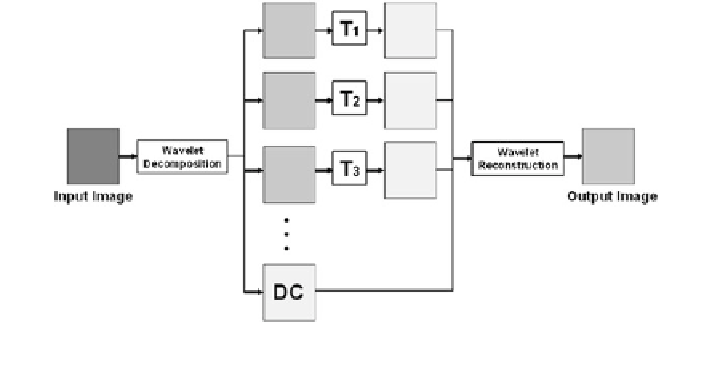Biomedical Engineering Reference
In-Depth Information
Fig. 2 A Multiscale framework of denoising and enhancement using discrete dyadic wavelet
transform. A three-level decomposition was shown
Denoising Using Wavelet Transform
Denoising can be viewed as an estimation problem trying to recover a true signal
component X from an observation Y where the signal component has been
degraded by a noise component N:
Y
¼
X
þ
N
The estimation is computed with a thresholding estimator in an orthonormal
basis B
¼
g
f
0\m\N
X
¼
X
q
m
X
;
g
m
ð
Þ
g
m
where q
m
is a thresholding function that aims at eliminating noise components
(via attenuating of decreasing some coefficient sets) in the transform domain while
preserving the true signal coefficients. If the function q
m
is modified to rather
preserve or increase coefficient values in the transform domain, it is possible to
enhance some features of interest in the true signal component with the framework
of equation (Fig.
2
).
Figure
3
illustrates a multiscale enhancement and denoising framework using
wavelet transforms. An over-complete dyadic wavelet transform using
bi-orthogonal basis is used. Notice that since the DC-cap contains the overall
energy distribution, it is usually kept untouched during the procedure. As shown in
this figure, thresholding and enhancement functions can be implemented inde-
pendently from the wavelet filters and easily incorporated into the filter bank
framework.

Search WWH ::

Custom Search